Slavic Evangelical Baptist Church (former Baptist Church)
Malvern
B c. 1860 John Courcelle, London for private chapel of 'Rose Hill',
residence of William Philpott, Mayfield Avenue, Malvern;
later inst 'Noorilim', residence of the Hon W.I. Winter-Irving, Murchison until c.1905
and then stored at Fincham factory;
inst present loc 1917 Geo Fincham & Son; res 1976 Laurie Pipe Organs.
1m, 6spst, 1c, tr. Man: 8.8 divided.8.4.2. Ped: 16 perm on.
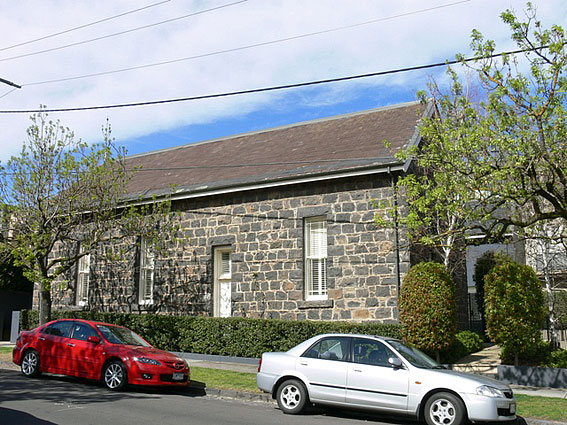
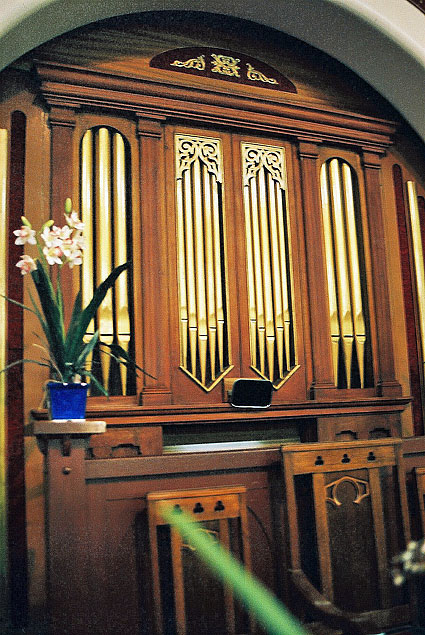
The organ in this church was built by John Courcelle, of 111 Marylebone Road, London, in the early 1860s. Courcelle had worked with George Fincham at James Bishop’s organ factory in London and exported seven organs to Victoria between around 1858 and 1865. His 1858 instrument at the Church of Christ, Geelong had “Hunter & Webb” written inside the bellows which must raise questions about how much of these instruments was manufactured by Courcelle and how much may have been sub-contracted.
This instrument was placed in a bluestone chapel in the grounds of ‘Rose Hill’, Toorak, which was the property of William Philpott. In the main house there was a three-manual organ built by J.W. Walker, of London, in 1865. The bluestone chapel survives in Mayfield Avenue, Malvern but there is no trace of ‘Rose Hill’, which was demolished.
The house and the two organs were auctioned in 1869. The location of the Courcelle organ during the next 10 years is uncertain. However, it was subsequently moved to ‘Noorilim’, Murchison, a large neo-classical mansion erected in 1879 by The Hon William Winter-Irving and designed by the architect James Gall.
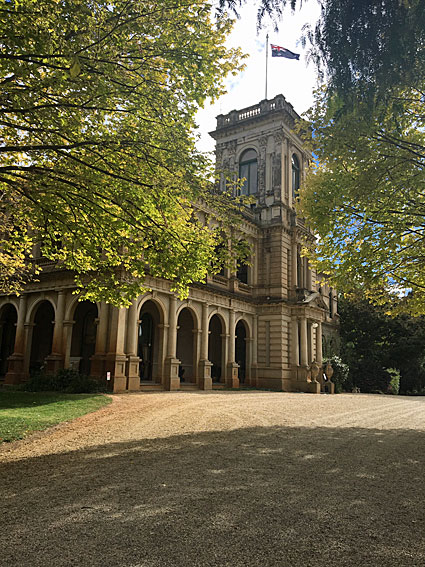
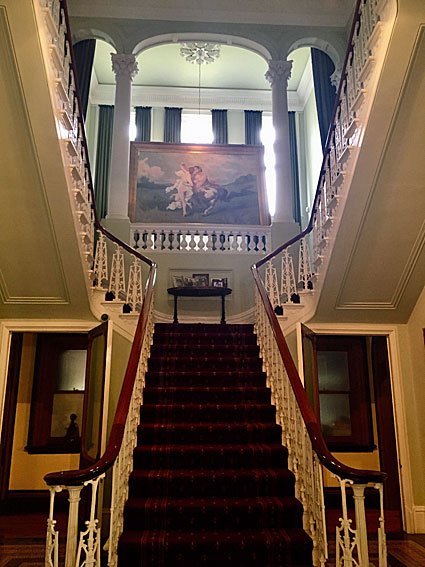
The organ was located at the top of the staircase (where the painting may be seen) facing down into the entrance hall, as shown above.
On 26 March 1906, George Fincham & Son refer to the “organ lately removed from Noorilim”. Fincham & Son acted as agents for the sale of the organ, which was stored at their Richmond factory and offered it to a number of potential locations including St Paul’s Church, Euroa. It remained unsold for 11 years and it was not until December 1917 that the instrument was finally sold to the Baptist Church, Malvern.
Here the instrument has remained largely without alteration. The façade pipes were gilded over earlier stencilling by I.G. Morton around 1970 and the instrument received a full restoration by Laurie Pipe Organs in 1976, at which time the instrument was moved to a central location from its previous position on the right side of the church. The sides of the organ were filled in with casing that unfortunately detracts from the outline of the very elegant classical-style casework, with cornice and four flats of dummy pipes.
MANUAL |
8ft 8ft 8ft 8ft 4ft 2ft [16] |
CC-BB TC TC 12 pipes permanently ‘on’ |
Compass: 56/20
All manual pipework enclosed in swell box
4 composition pedals
Lever swell pedal
Mechanical key and stop action
Keyboard may have been retractable
George Fincham & Sons Pty Ltd letter books
E.N. Matthews, Colonial Organs and Organbuilders. Carlton: Melbourne University Pressm 1969, p.59, 182-3. Note that Matthews confuses this instrument with the Anderson organ that went to ‘Dhurringile’, Murchison (owned by Winter-Irving’s brother) and that is now at St John’s Anglican Church, Flinders
John Maidment
21 October 2008
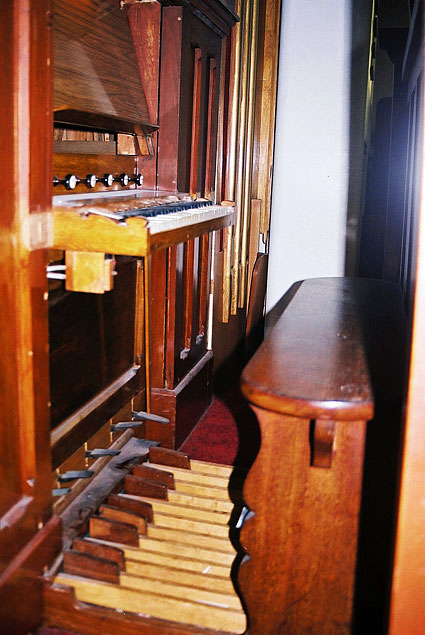
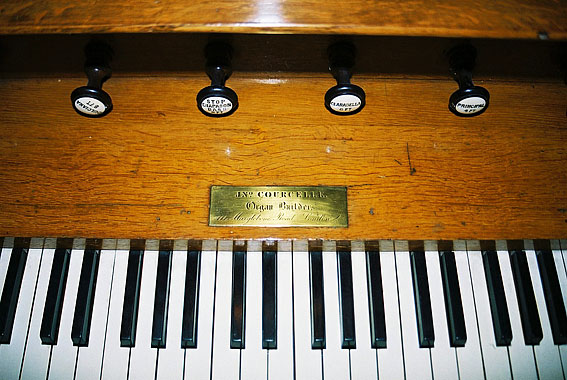

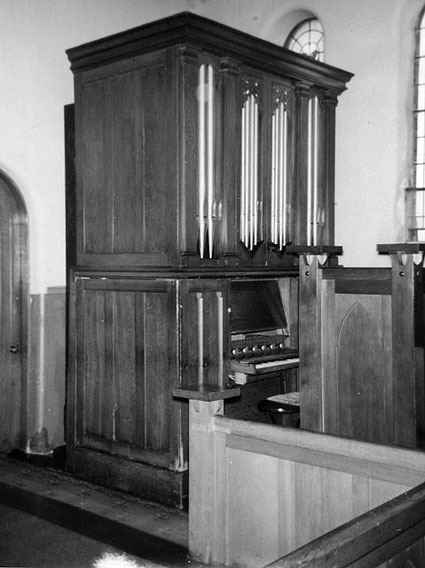
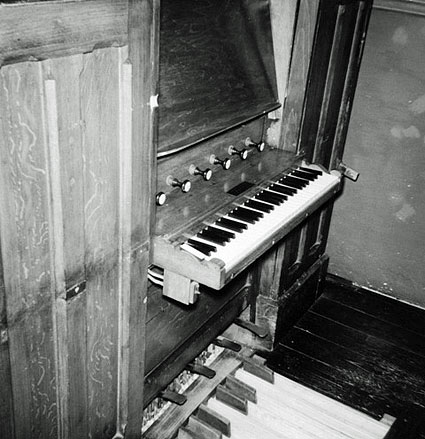
Two B & W photos above:
W.G.S. Smith around 1970, before the organ was restored and the façade pipes gilded
Photos: JRM